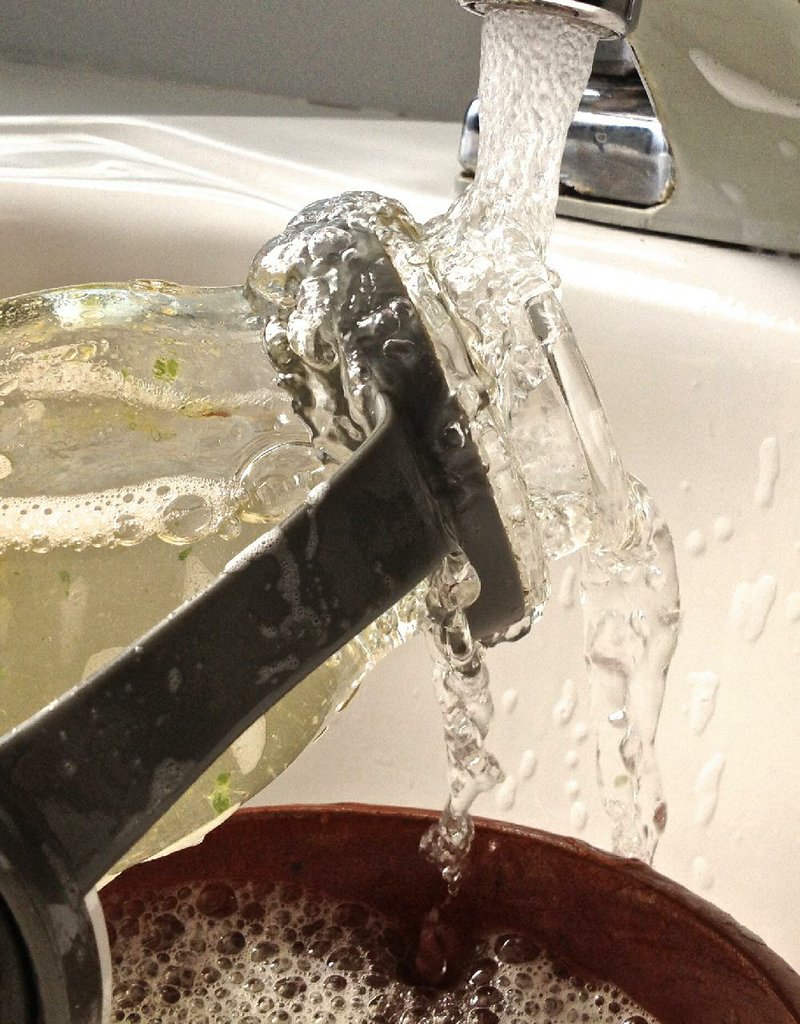Q: If you can put your hands in the water while washing dishes, is it really hot enough to kill germs? And if not, what's the point of using all that energy?
A: The Food and Drug Administration code for dishwashing by hand in a commercial food establishment calls for a wash solution temperature of 110 degrees, which is uncomfortably hot for hands but not hot enough to kill most germs.
The stated reasoning behind the relatively low temperature requirement for the washing stage of the three-part washing-rinsing-sanitizing standard is not direct germicidal action. Rather, according to the FDA, it is to make sure that the water is hot enough to remove organic matter from the dishes and to dissolve animal fats that may be present on them.
A lower temperature might also interfere with the performance of the detergent being used, according to the guidelines.
A study by food scientists at Ohio State University, published in June 2007 in The Journal of Food Engineering, found evidence that even lower temperatures may be effective at germ removal in many circumstances. For example, in a study of washing various kinds of soiled dishes purposely contaminated with bacteria, a temperature of only 75.2 degrees reduced Escherichia coli and Listeria innocua to acceptable levels when all three steps were otherwise properly performed -- except in the case of glasses with dried-on milk. Using a more concentrated sanitizing agent in the last step was also effective, the study found.
ActiveStyle on 06/29/2015

